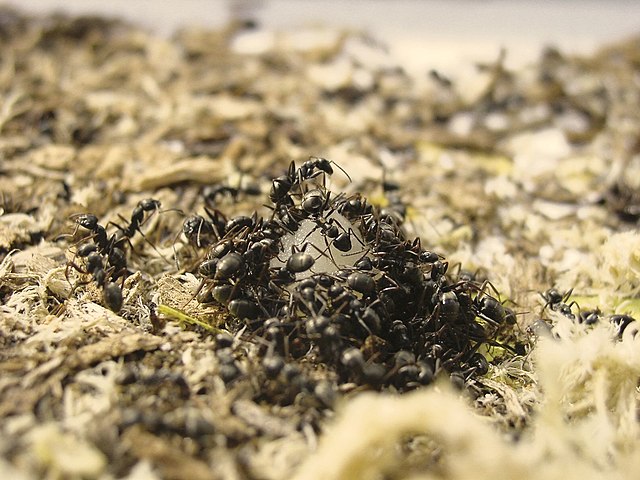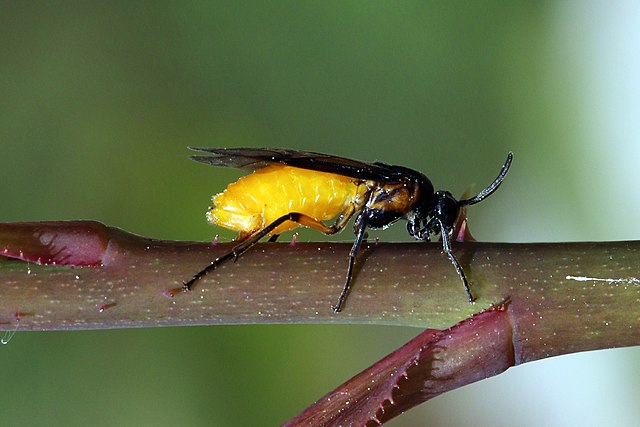Worker policing is a behavior seen in colonies of social hymenopterans whereby worker females eat or remove eggs that have been laid by other workers rather than those laid by a queen. Worker policing ensures that the offspring of the queen will predominate in the group. In certain species of bees, ants and wasps, workers or the queen may also act aggressively towards fertile workers. Worker policing has been suggested as a form of coercion to promote the evolution of altruistic behavior in eusocial insect societies.
Worker policing is found in honey bees and other hymenopterans including some species of bumblebees, ants and wasps.
Formica fusca ants can recognize nest-mates
Apis mellifera workers remove worker-laid eggs by eating them (oophagy)
Worker of Harpegnathos saltator killing a foreign queen
Hymenoptera is a large order of insects, comprising the sawflies, wasps, bees, and ants. Over 150,000 living species of Hymenoptera have been described, in addition to over 2,000 extinct ones. Many of the species are parasitic.
Females typically have a special ovipositor for inserting eggs into hosts or places that are otherwise inaccessible. This ovipositor is often modified into a stinger. The young develop through holometabolism — that is, they have a wormlike larval stage and an inactive pupal stage before they reach adulthood.
Hymenoptera
Bombus muscorum drinking nectar with its long proboscis
Symphyta, without a waist: the sawfly Arge pagana
Apocrita, with narrow waist: the wasp Vespula germanica








